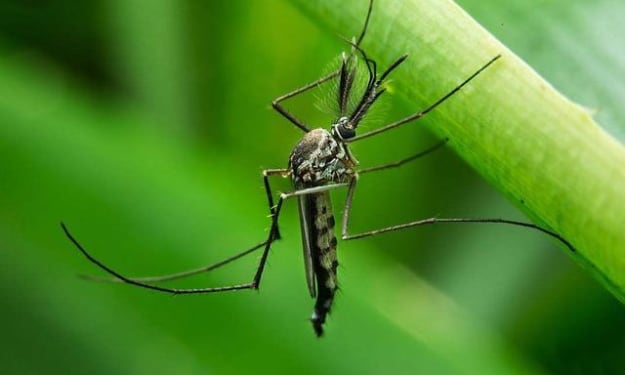What are black holes, white holes and wormholes? Which is the strangest?
strangest hole

The most common way of reproduction in nature is sexual reproduction, that is, the reproductive cells of both sexes combine to develop into a new individual. This method has many advantages. For example, sexual reproduction can promote the spread of favorable genetic mutations within the population, speed up the evolution of species, and enhance the ability of individuals to adapt to the environment, which is of great benefit to the survival of species. Sometimes, some scientists may do the opposite, using sexual reproduction to reduce the population size of some species.
During this time, you may have seen the news that the US has started releasing genetically modified mosquitoes in Florida. The pilot project, co-sponsored by the Florida Keys and British biotech company OxITEC, is expected to release more than 1 billion genetically modified mosquitoes in two states in the United States. Some friends may be puzzled. Mosquitoes bite people and spread diseases, but the United States has released so many mosquitoes. What is going on? It turned out that the released mosquitoes were male mosquitoes, which were genetically edited to mate with wild female mosquitoes and only give birth to male mosquitoes, and male mosquitoes do not bite people. Theoretically, with the release of these gene-edited male mosquitoes, the number of wild female mosquitoes would plummet.
Could 'monogamy' lead to animal extinction?
In addition to man-made gene editing to control the number of species, scientists have found that in the natural state, the way species compete and select during the reproduction process can have a significant impact on the extinction risk of these species, and different ways may lead to the extinction of animal species.
According to the study published in Global Change Biology, the researchers used the red grain thief (Tribolium castaneum) as the research object, and let these red grain thieves live in "monogamy" (that is, each male Tribolium castaneum and Evolved under two different mating modes: a female guinea guinea pig) and "polygamous" (each female guinea lupus can be combined with five male guinea lupus) to see how different mating patterns have The ability of thieves to cope with the living environment.
After 10 years of evolution in the laboratory and 95 generations of different mating patterns, the researchers simulated the environment facing today's biodiversity for the red grain thieves in the laboratory. Observe how the last 15 generations of red grain thieves cope with different living conditions. The results found that the red grain thief in the monogamous mode had a decreased ability to cope with the living environment, and the population continued to decline, and it was extinct at the end of this experiment; At the end of the experiment, although the population also declined, the rate of decline was very slow. At the end of the experiment, 60% of the red grain thieves were able to survive. The researchers believe that in the "polygamous" mode of the red grain thief, female red grain thieves have more opportunities to choose mates. Through reproductive competition, they can remove some bad genes and inherit some good genes. In the end, the red pirates in the "polygamous" mode have a stronger ability to cope with harsh environments.
inspired
Many species on earth are now on the verge of extinction. For example, the crested ibis, known as the "bird giant panda", once faced extinction, but the crested ibis population has grown significantly since then. Crested ibis are medium-sized waders. They inhabit streams, swamps, paddy fields, and other areas. They mainly feed on aquatic animals such as fish, crabs, frogs, and snails, as well as insects. They are monogamous animals, only seven when they were discovered in 1981, such a small population size, they may disappear from the earth at any time.
In order to protect these only crested ibis, we have taken a series of protection and rescue measures. In addition to in situ protection, we have also restored the number of crested ibis through artificial breeding technology. In 1989, the world's first artificial breeding of crested ibis was successful in Beijing Zoo. . After years of ability, the number of crested ibis has increased from 7 in 1981 to more than 1,000 now, and the crested ibis has been "reborn".
In addition to crested ibis, there are still many species that continue to be rescued. If they are allowed to reproduce naturally in their natural state, it may be difficult to restore the population size in a short period of time. However, with the help of artificial reproduction and other technologies, these endangered species can be combined with different individuals. , better gene exchange may do more with less.
About the Creator
witty lukas
The doubts held by human beings are the germs of science






Comments
There are no comments for this story
Be the first to respond and start the conversation.